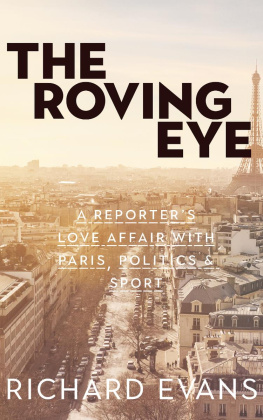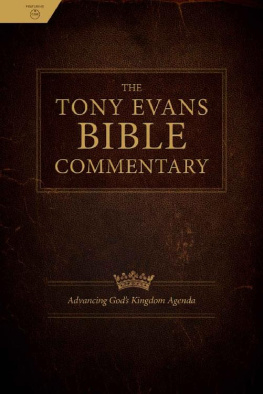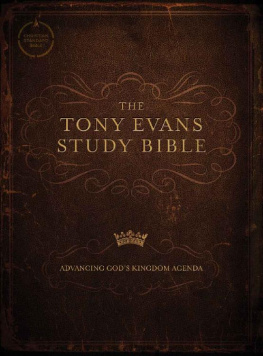Martha Evans is a lecturer in Film and Media Studies at the University of Cape Town, where she completed her PhD thesis.
BROADCASTING
THE END OF
APARTHEID
Live Television and the Birth of
a New South Africa
M ARTHA E VANS
Published in 2014 by I.B.Tauris & Co. Ltd
6 Salem Road, London W2 4BU
175 Fifth Avenue, New York NY 10010
www.ibtauris.com
Distributed in the United States and Canada
Exclusively by Palgrave Macmillan
175 Fifth Avenue, New York NY 10010
Copyright 2014 Martha Evans
The right of Martha Evans to be identified as the author of this work has been asserted
by her in accordance with the Copyright, Designs and Patents Act 1988.
All rights reserved. Except for brief quotations in a review, this book, or any part thereof, may not be reproduced, stored in or introduced into a retrieval system, or transmitted, in any form or by any means, electronic, mechanical, photocopying, recording or otherwise, without the prior written permission of the publisher.
Every attempt has been made to gain permission for the use of the images in this book.
Any omissions will be rectified in future editions.
International Library of African Studies 44
ISBN: 978 1 78076 862 5
eISBN: 978 0 85773 583 6
A full CIP record for this book is available from the British Library
A full CIP record is available from the Library of Congress
Library of Congress Catalog Card Number: available
Typeset in Garamond Three by OKS Prepress Services, Chennai, India
For Madeleine and Juliette, for whom this shall all be history
List of Figures
Bob Connolly cartoon from the Rand Daily Mail critiquing Afrikaner fears about the potential effects of watching the moonlanding, 25 July 1969 (courtesy of Africartoons).
A Daily News cartoon by Jock Leyden, highlighting the perceived hypocrisy of South Africas disinvitation from the televised royal wedding, July 1981 (courtesy of Jock Leyden and Africartoon).
A Tony Grogan cartoon depicting the irony of Afrikaner interest in the royal wedding, Cape Times, 24 July 1981 (courtesy of Tony Grogan).
A Charl Marais cartoon from Die Volksblad, July 1981 (courtesy of Die Volksblad).
A Willem Loots cartoon from Beeld, 31 July 1981 (cartoon of Willem Loots and Africartoons).
Tom Phillips, Oh Miss South Africa, 1975 (courtesy of Tom Phillips).
A Frans Esterhuyse cartoon from Die Transvaler, 20 May 1985 (courtesy of Frans Esterhuyse and Africartoons).
A Mynderd Vosloo cartoon from the Argus, depicting Zola Budds eventual breaking of the 5,000-metre world record in 1985, 18 February 1985 (courtesy of Mynderd Vosloo and Africartoons).
Poster of Mandelas likeness distributed by COSATU, 1989 (courtesy of COSATU).
Button produced by the Anti-Apartheid Movement in London, no date (from private collection of Richard Knight).
First official photograph of Mandela in 27 years, released by De Klerks government, 9 February 1990 (courtesty of the F.W. de Klerk Foundation).
Police clash with Bopaitong residents, 20 June 1992 (courtesy of Greg Marinovich).
AWB member Alwyn Wolfaardt holds up his arms in surrender shortly before being executed in the Battle of Bophuthatswana, March 1994 (photo: Kevin Carter/Corbis Sygma).
ACKNOWLEDGEMENTS
There are numerous individuals who have contributed to this project in one way or another. Firstly, many thanks to my PhD supervisor and mentor, Ian Glenn, whose critical responses led me to the work of Daniel Dayan and Elihu Katz. It was the discovery of Media Events that proved to be the turning point in my investigation of television and post-apartheid South Africa. Thanks also to Elihu Katz himself especially for the suggested title for Chapter 2 of the book, Events Envy and to Paddy Scannell, whose astute and encouraging comments on versions of the book helped me to structure material and fine-tune some of my thinking. Eric Louws reviewing of the manuscript provided the necessary South African take on events and I am grateful to him for his helpful observations.
There are also numerous colleagues from the University of Cape Towns Centre for Film and Media Studies who supported me in various ways; I am especially grateful to Lesley Marx, who helped me to access some of the production costs for the book. Also, to Ian Rijsdijk, Ron Irwin, Wallace Chuma and Tanja Bosch, who discussed my research with me at various points, thank you. Id like also to take this opportunity to acknowledge the University of Cape Town for assisting financially in various ways over the years.
Many thanks to the various individuals who assisted me in locating footage, newspaper articles and secondary material: Duma-Sandile Mboni and Sias Scott from the South African Broadcasting Corporation; the staff at Interlibrary Loans at the University of Cape Town; and Lucas Raganyana, Claire Welch, Michelle Boehme and Mpho Mokone from the South African Advertising Research Foundation.
I am also grateful to key individuals who took time out of their busy schedules and allowed me to interview them, including Dave Steward, F.W. de Klerks communication advisor, former Reuters photojournalist Graeme Williams, documentary photographer journalist Paul Weinberg, journalist Max du Preez, former head of SABC radio news Pippa Green, and Desmond Tutus communications advisor, John Allen. Their insights into the era under study have been illuminating.
I owe a debt of gratitude to Beth Lindop, my editor, who cast her meticulous eye over the text, and to Sanet le Roux for doing such a thorough job with the index. I am also extremely grateful to the team at I.B.Tauris: to Tomasz Hoskins for having faith in the project and taking on the book in the first place, and to Allison Walker for overseeing the production process that has resulted in such a beautiful final product.
Finally, I owe so very much to my husband Robert Plummer. Thank you for all your support: for putting up with my need to read paragraphs out loud late at night, for your masterful help in structuring the book, for proofreading the final draft, for watching over our twin daughters when I needed some extra time to work, and for cooking and making sure I was fed while I sat glued to my computer. This book could not have happened without you.
Martha Evans
May 2014
TIMELINE
This timeline focuses on some of the relevant occurrences leading up to the main televised events discussed in this book and includes a few additional political events that help to contextualize South Africas history. It is not representative of the countrys national chronology in any way.
| 21 March 1960 | In what becomes known as the Sharpeville massacre, police open fire on marchers protesting against pass laws, killing 69 and injuring 186. |
| 8 April 1960 | The African National Congress and the Pan African Congress (PAC) are banned in South Africa. |
| August 1960 | The Summer Olympics are held in Rome; apartheid South Africa participates in the Games for the last time until 1992. |
| 11 July 1963 | |












